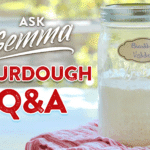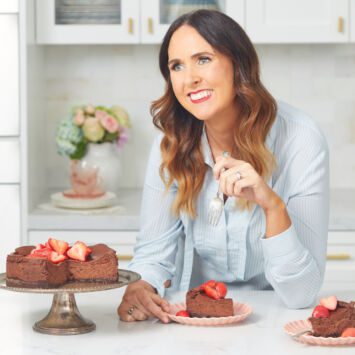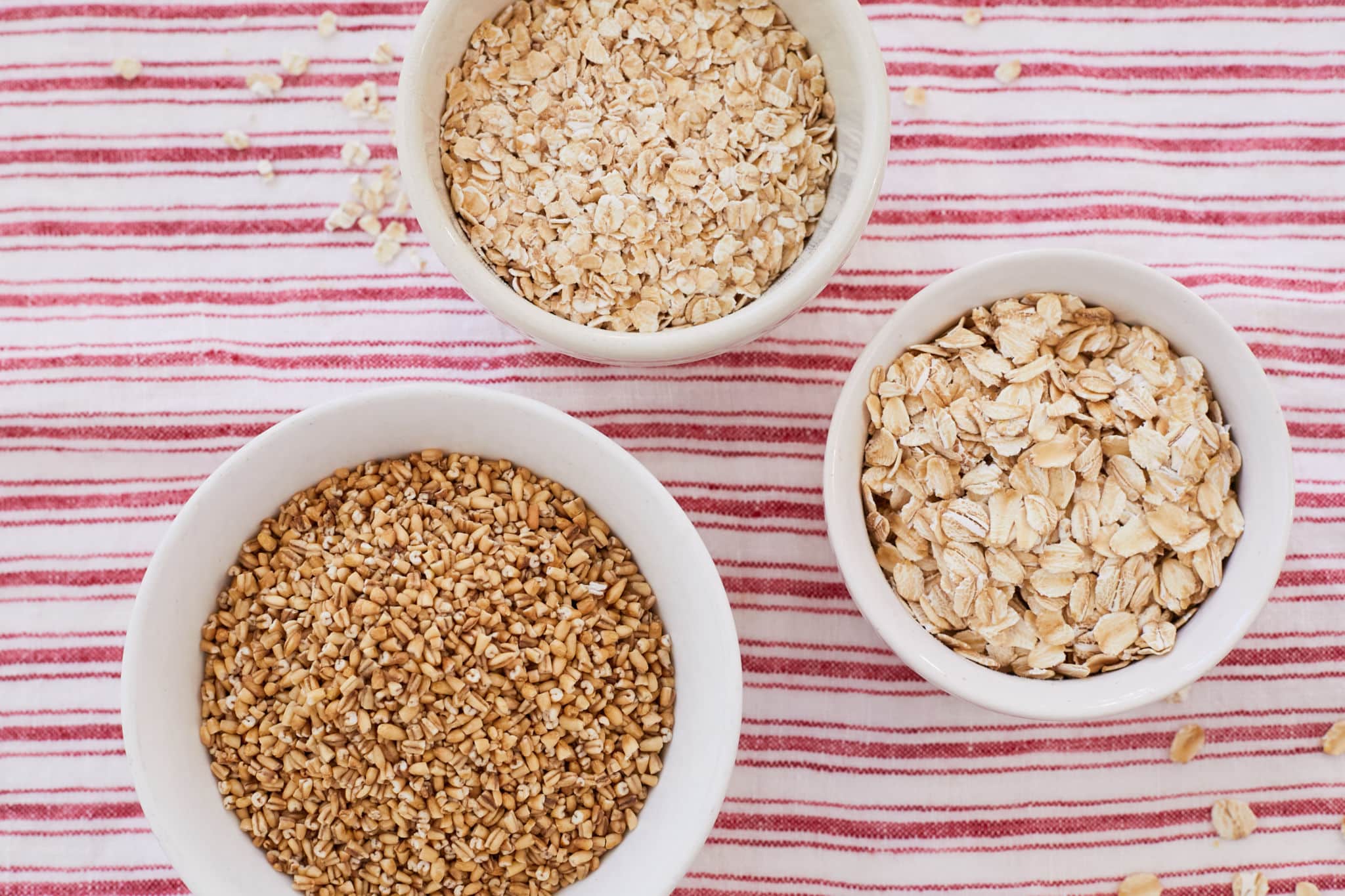
This post may contain affiliate links. Please see my full disclosure for details.
Hi Bold Bakers!
WHAT YOU GET: In this article, you will get all the information you will need about baking with oat, including how to cook with them, how they will change your baked goods and the nutritional benefits of oats.
While you may know oats as the title component in oatmeal, oats are also a very versatile and healthy ingredient used in many ways in recipes — from whole oats to oat flour. Together, we’ll break down the health benefits of oats and how we can incorporate them into our baking!
Disclaimer: This blog does not provide medical advice. This blog post is meant to provide general information and open a discussion surrounding health and food. The following information, and any link to other websites, should not be considered medical advice. If you or another person has a medical concern, please contact your health care provider or seek other professional medical treatment.
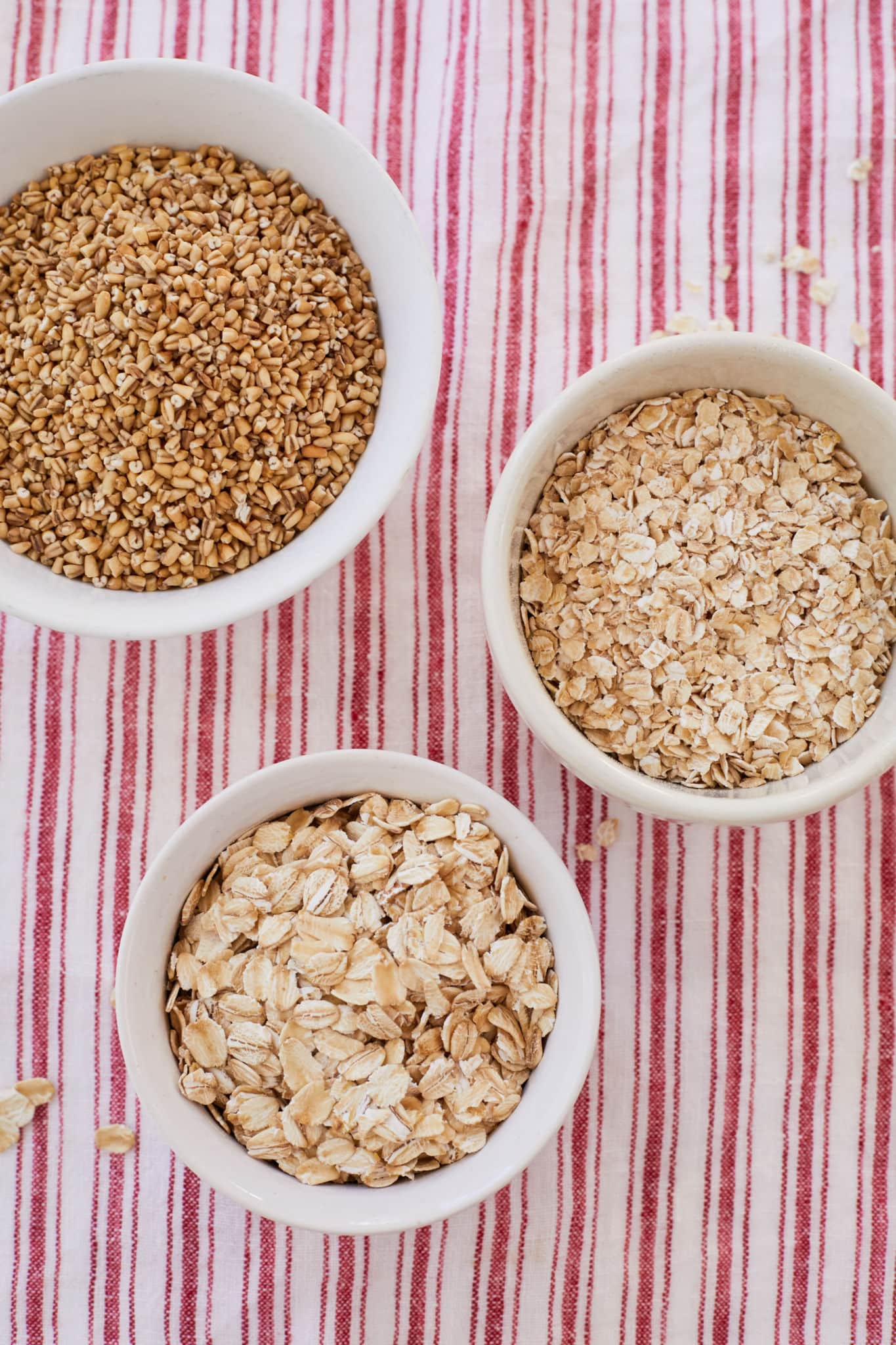
The Different Types of Oats And What Oats To Use While Baking
If you’ve walked down the oats section in the grocery store, you may have been overwhelmed with all the different types of oats. As a helpful guide, here is a breakdown of the different kinds of oats and when to use them!
- Old-Fashioned Oats (aka rolled oats or jumbo oats) – Old-fashioned oats are the most common type of oat. They are made by steaming oats and rolling them. Old-fashioned oats cook fairly fast, which makes them ideal for making oatmeal. They are also commonly used to make oat flour and are often used in baked goods such as oatmeal cookies.
- Steel-Cut Oats – Steel-cut oats are not steamed or flattened, which means they are sturdier, with a chewier texture than old-fashioned oats. They also take much longer to cook, making them less suitable for baking than old-fashioned oats.
- Quick Oats – Quick oats are old-fashioned oats that have been rolled even thinner and are broken into smaller pieces. Since the pieces are smaller, they cook much faster than old-fashioned oats but have a mushier texture when cooked. They can be used interchangeably with old-fashioned oats unless otherwise stated in a recipe.
- Instant Oats – Instant oats are similar to quick oats, except they are broken into even smaller pieces and have been rolled even thinner, so they cook even faster than quick oats. They tend to be mushy when cooked but can be used to make oatmeal and oat flour and can be used interchangeably with quick oats or old-fashioned oats in a pinch.
- Whole Oat Groats – Whole oat groats are another name for an oat grain kernel. They are made by simply harvesting the oats, cleaning them, and removing the inedible shell. They are very large and take a long time to cook, so they’re not ideal for baking.
- Scottish Oats – Scottish oats are made by grinding whole oat groats. This results in some grains being almost as small as flour while others are larger. While other oats, such as old-fashioned oats, are steamed and rolled, Scottish oats are not. Scottish oats are used to make oatmeal and porridge because the different sizes of the grains lead to a creamier result, while the larger pieces add a bit of texture. They’re not ideal for baking, though.
- Oat Bran – Oat bran is the outer coating of the oat kernel. It is packed with fiber, vitamins, and minerals. Whole oat groats, steel-cut oats, and Scottish oats have oat bran — but this is the oat bran by itself. It can be added to bread and other starchy dishes to add fiber and other nutrients. At most, ⅓ of the amount of flour or oat flour in a recipe can be replaced with oat bran.
- Oat Flour – Oat flour is simply old-fashioned oats that have been ground into flour. Instant oats and quick oats can also be used to make oat flour because they are just a smaller form of old-fashioned oats. It is incredibly easy to make oat flour at home following my recipes for How to Make Oat Flour.
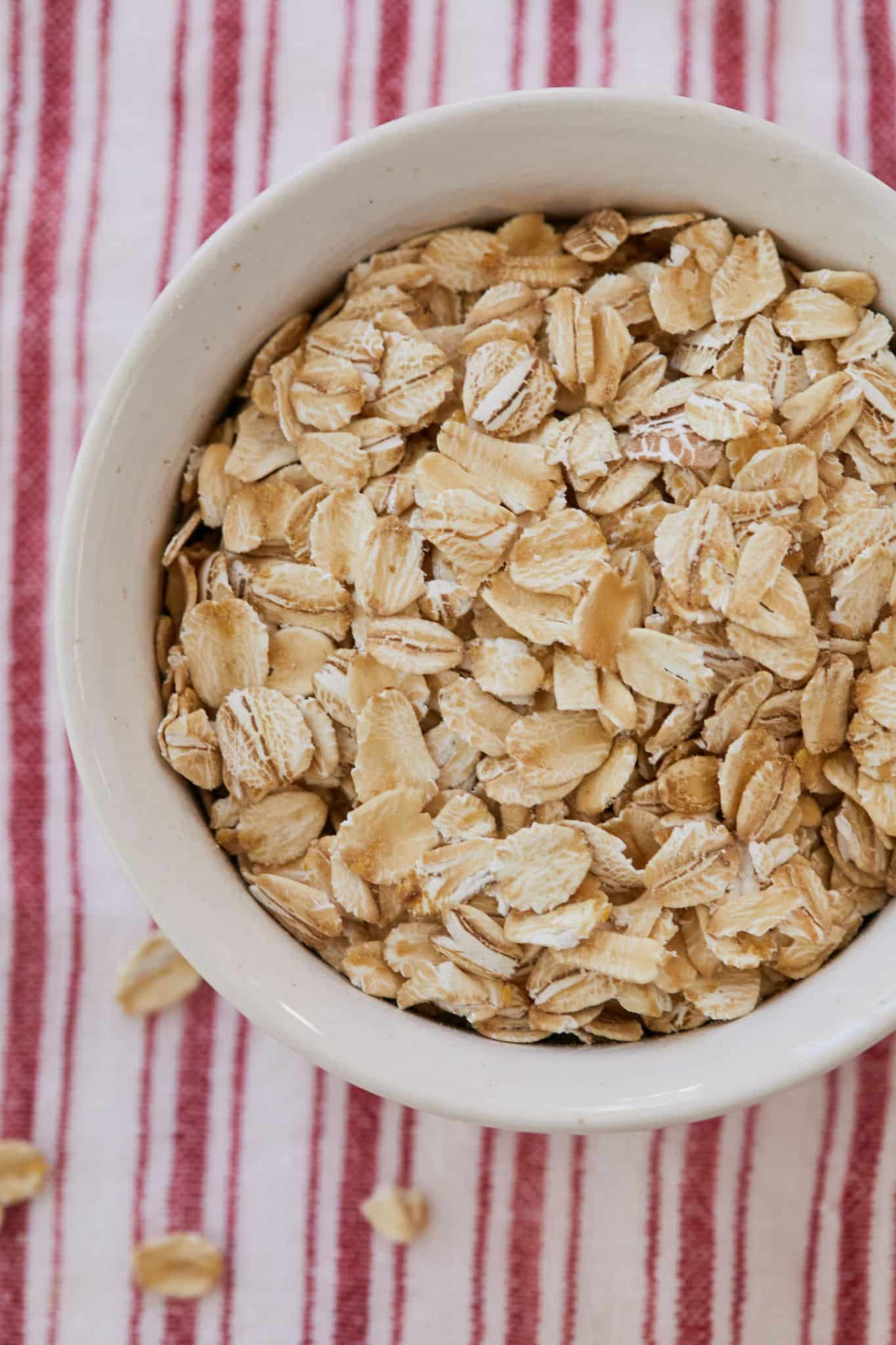
How To Use Oats And Oat Flour In Baking
Oats can be used plain in recipes (like in oatmeal cookies) in toppings for crisps, or they can be ground into oat flour which can be used instead of all-purpose flour. Since oats are naturally gluten-free, oat flour is a good substitute for anyone who can’t eat gluten. Always be sure to check the label of the oats/oat flour you buy to ensure they aren’t processed in a facility that processes gluten.
Oat flour has a more neutral flavor compared to other gluten-free flours. For every 1 cup of all-purpose flour in a recipe, you will need 1 ⅓ cups of oat flour. While the taste of your product will not be heavily altered, the texture of the baked goods made with oat flour will be slightly chewier and crumblier than if using just AP flour.
Why You Should Use Oats In Your Baking
Whether you’re gluten-free or not, oats are great for you and a great ingredient to eat regularly. Here are some of the health benefits of oats:
- They are high in antioxidants, vitamins, and minerals such as manganese, phosphorus, copper, magnesium, zinc, B vitamins, and more.
- They are a good source of carbs, protein, and both soluble and insoluble fiber (which helps relieve constipation).
- They are known to reduce levels of LDL (bad) cholesterol which can lower one’s risk of heart attacks and strokes.
- They can help improve blood sugar control and reduce insulin resistance, lowering one’s risk of Type 2 diabetes.
- They are very filling, so they can aid in weight loss by keeping you full for longer.


